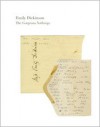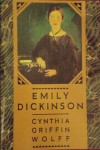Currently reading
Saints in Art
The Gorgeous Nothings: Emily Dickinson's Envelope Poems
Selected Poems
Emily Dickinson
Lies My Teacher Told Me : Everything Your American History Textbook Got Wrong
Gone with the Wind
Caddie Woodlawn/Newbery Summer
 Reading this in your forties while you're also reading Lies My Teacher Told Me is very different from reading it when you're ten years old. Although even then, I remember cringing a bit.
Reading this in your forties while you're also reading Lies My Teacher Told Me is very different from reading it when you're ten years old. Although even then, I remember cringing a bit.Because on the one hand, Caddie Woodlawn is all kinds of awesome. She's a redhead roaming wild in the woods of western Wisconsin, and you won't catch her sewing a seam or polishing the furniture when she could be climbing a tree or plowing a field.
On the other hand, this is Wisconsin in 1864. "Pioneer days," as the book calls them. And that's some problematic territory.
Eleven-year-old Caddie and her brothers start off their adventures crossing a river, though they haven't a boat and can't swim. They're just that unstoppable.
But here's their idea of idle conversation:
"Do you think the Indians around here would ever get mad and massacre folks like they did up north?" wondered Warren.
Warren is quickly reassured by his brother:
"No, sir," said Tom, "not these Indians!"
"Not Indian John, anyhow," said Caddie.
Later on in the book, the white people in this little Wisconsin town freak out because they think the Indians are going to rise up and murder the whites in the night. Because that's what Indians do.
Only two years before, the Indians of Minnesota had killed a thousand white people, burning their houses and destroying their crops. The town of New Ulm had been almost entirely destroyed. Other smaller uprisings throughout the Northwest flared up from time to time, and only a breath of rumor was needed to throw the settlers of Wisconsin into a panic of apprehension.
Caddie's father says it's all nonsense and tavern rumors.
"I am willing to stake my farm, and a good deal that I hold dear besides, on the honor and friendliness of the Indians hereabouts."
So as a child, I absorbed the following lessons:
1. Indians randomly committed massacres against white "settlers."
2. There were individual exceptions, so Indians like Caddie's friend "Indian John" were okay.
3. But in general, there was no telling what kind of violence might occur and when the Indians might decide to engage in an "uprising."
Now, I was cognizant enough to cringe later in the book when Caddie kindly buys some presents for three little boys whose mother is a kindly Indian and whose father is a lazy white jerk. Some of the presents are red handkerchiefs:
The little Hankinsons were speechless with delight. The red was like music to their half-savage eyes.
That's enough to make even a dumb suburban white kid flinch.
But the rest of it? This was a novel, true, but it was based on the author's own family's experiences, just as Laura Ingalls Wilder's books are fiction based on fact.
So the conclusion I drew was that, yes, Indians had been really scary and it wasn't much of a wonder that the whites hadn't gotten along with them. Even the nice ones, like Indian John and the Hankinson kids' mother, just couldn't assimilate quickly enough to the new dominant culture, or be nice enough to convince the whites they meant no harm; so in spite of plenty of good intentions on both sides, they faded away and disappeared.
I never learned much history in school; but in general, I thought I knew what I hadn't learned. That is, I didn't know much about, say, American government, or the War of 1812; but I knew they were there.
I didn't know anything at all about the Indian wars, and I didn't know there was anything to know about them because they weren't even introduced as a concept. Wars were something white people fought against other white people – the Americans against the British, the British against the French, the Germans against pretty much everybody else.
Indians and white people clashed, sure. And the whites were pretty rude to just come on over to the Americas like there wasn't even anybody already living here. (My teachers did get that much right, though they were pretty soft on the details.)
But wars?
So when I read that bit about the massacre in Minnesota in Caddie Woodlawn, I took it at its word. And to be fair, the book is not all about those awesome whites and the bad Indians they're up against. Whites are often viciously violent themselves:
Sometimes, leaving the women and children at home, the men went out to attack the Indians, preferring to strike first rather than be scalped in their beds later. The fear spread like a disease, nourished on rumors and race hatred. For many years now the whites had lived at peace with the Indians of western Wisconsin, but so great was this disease of fear that even a tavern rumor could spread it like an epidemic throughout the country.
Okay. But the "massacre" of New Ulm wasn't a random spate of violence. It was, as I only learned when I reread Caddie and did some Googling, part of what is variously known as the Dakota War of 1862 and the Sioux Uprising. It was triggered by – what a surprise – treaty violations on the part of the U.S. government, and corruption in the Bureau of Indian affairs. I'm way oversimplifying, but after months of attempted negotiations on the part of the Dakota led to nothing better than broken promises and famine, war erupted. Not random massacres because that's just what those Indians do: war.
In the last half of 1862, the U.S. government was fighting not one war, but two.
Nobody taught me that.
Caddie Woodlawn is a beautifully written book, but like Gone With The Wind, it perpetuates some deeply harmful myths.
By all means, read this book. It's important and, when it's not talking about Indians, often hilariously funny and deeply touching.
But please also read the chapter "Red Eyes" in James Loewen's Lies My Teacher Told Me, so you can get the whole story. Read about what's wrong with the author of Caddie Woodlawn describing Wisconsin as a "wilderness" and the white settlers as "pioneers," and why it didn't matter how good "good Indians" like Indian John were.
I'll end with this paragraph from that book:
The overall story line most American history textbooks tell about American Indians is this: We tried to Europeanize them; they wouldn't or couldn't do it; so we dispossessed them. While more sympathetic than the account in earlier textbooks, this account falls into the trap of repeating as history the propaganda used by policy makers in the nineteenth century as a rationale for removal – that Native Americans stood in the way of progress. The only real difference is the tone. Back when white Americans were doing the dispossessing, justifications were shrill. They denounced Native cultures as primitive, savage, and nomadic. Often writers invoked the hand or blessings of God, said to favor those who "did more" with the land. Now that the dispossessing is done, our histories since 1980 can see more virtue in the conquered cultures. But they still pictured American Indians as tragically different, unable or unwilling to acculturate. The trouble is, it wasn't like that.








